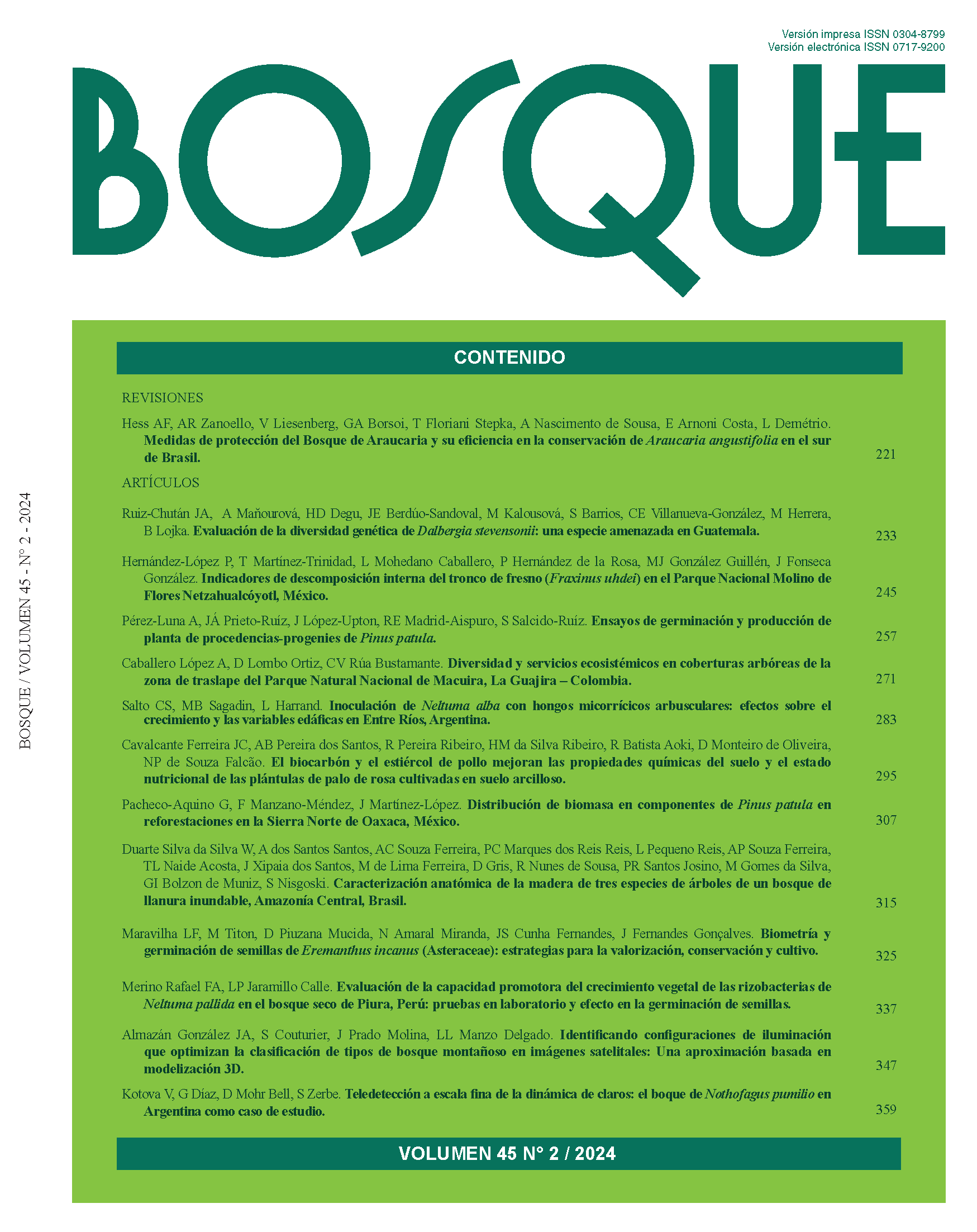Main Article Content
Oct 13, 2024
Abstract
The conservation of biodiversity in the tropics has prompted the need for extended and accurate forest inventories in mountainous landscapes, where satellite imagery and radiative transfer modeling of forests have acquired much relevance. Last-generation classification algorithms (i.e. machine learning) using terrain information have proven useful for mapping forest types, however, the accuracy of classifications is measured on average over a large extent, and little emphasis has been placed on predicting which illumination configurations could in fact cause high uncertainty in the classification results. This paper presents a 3D modeling approach adapted to the Discrete Anisotropic Radiative Transfer (DART) image simulator, which indicates whether forest types are distinguishable in a set of steep terrain configurations. The approach also describes a comparison of simulated and real forest scenes on slopes at high (4 m) spatial resolution. This method was applied to estimate the spectral separability of three forest types (oak, pine, and high tropical forests) on steep terrain in Mexico. For extreme (low or high) solar incidence angles, the pine and high tropical forests were indistinguishable, and by contrast, they were distinguishable on slopes near to the solar perpendicular plane. As a consequence, to maximize favourable slope configurations, we recommend to incorporate images acquired in the morning and in the afternoon for machine learning classification algorithms.
In this paper, we present a 3D modeling approach, adapted to the Discrete Anisotropic Radiative Transfer (DART) image simulator, that indicates if forest types are distinguishable or not in a set of steep terrain configurations. The approach also describes the comparison of simulated and real forest scenes on slope at high resolution. The method was applied for the estimation of the spectral separability of three forest types (oak, pine and high tropical forests) on steep terrain in Mexico. The spectral separability between pine and tropical forests depended on the slope aspect, presumably because of structural similarities in the canopy. Recommendations are made in terms of classification expectations and simplifying assumptions in the 3D modeling of complex forests.
Downloads

This work is licensed under a Creative Commons Attribution-NonCommercial 4.0 International License.


